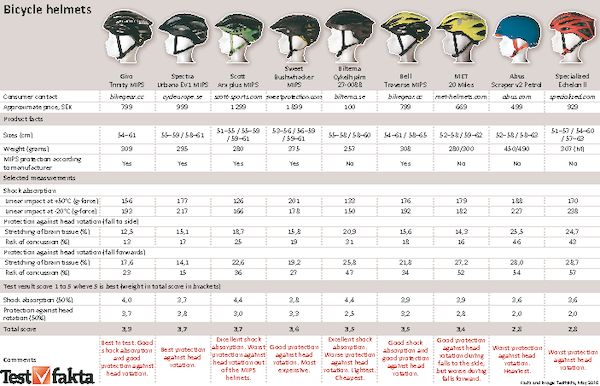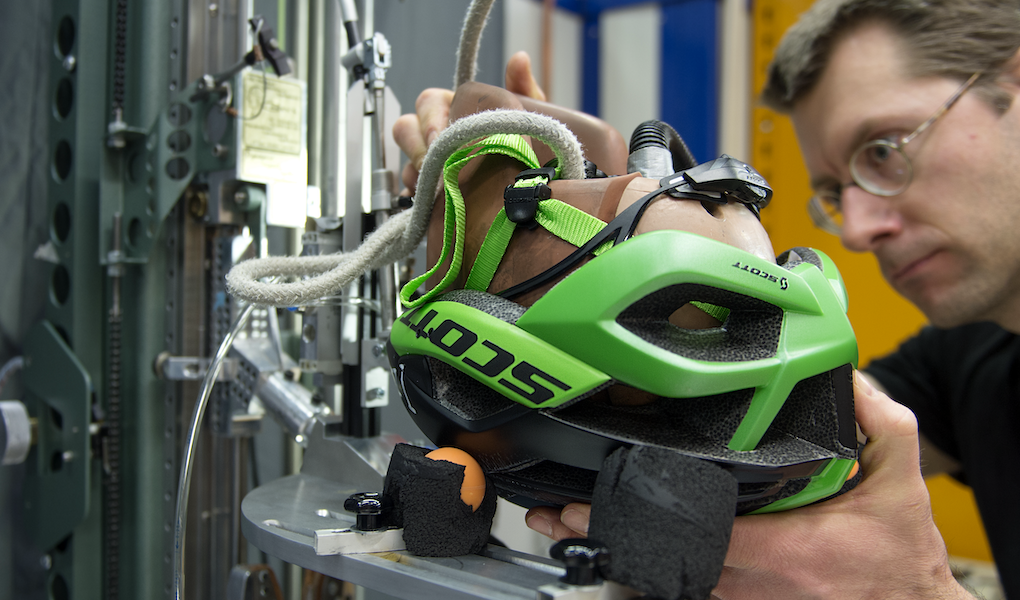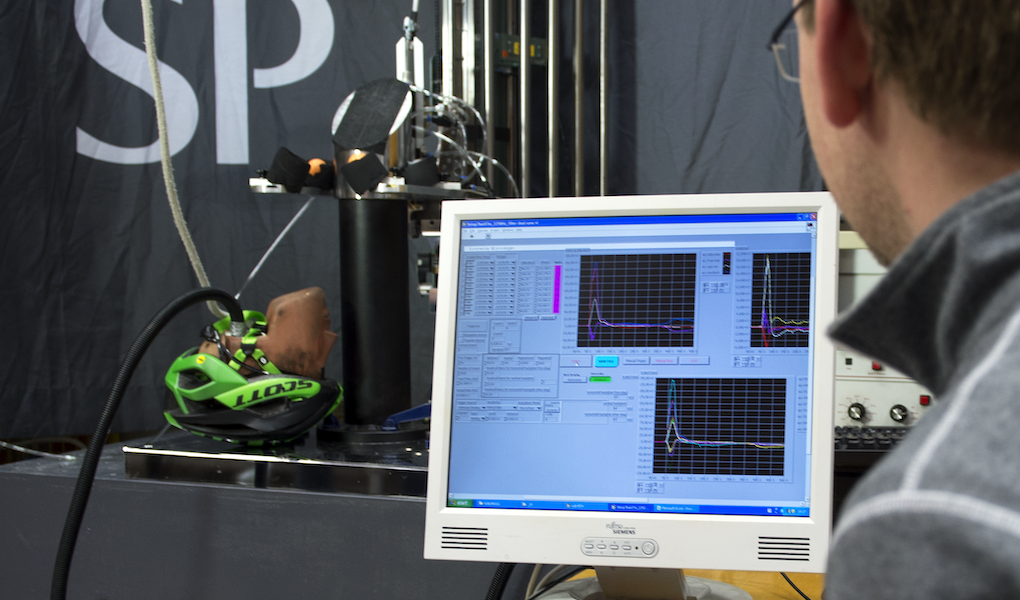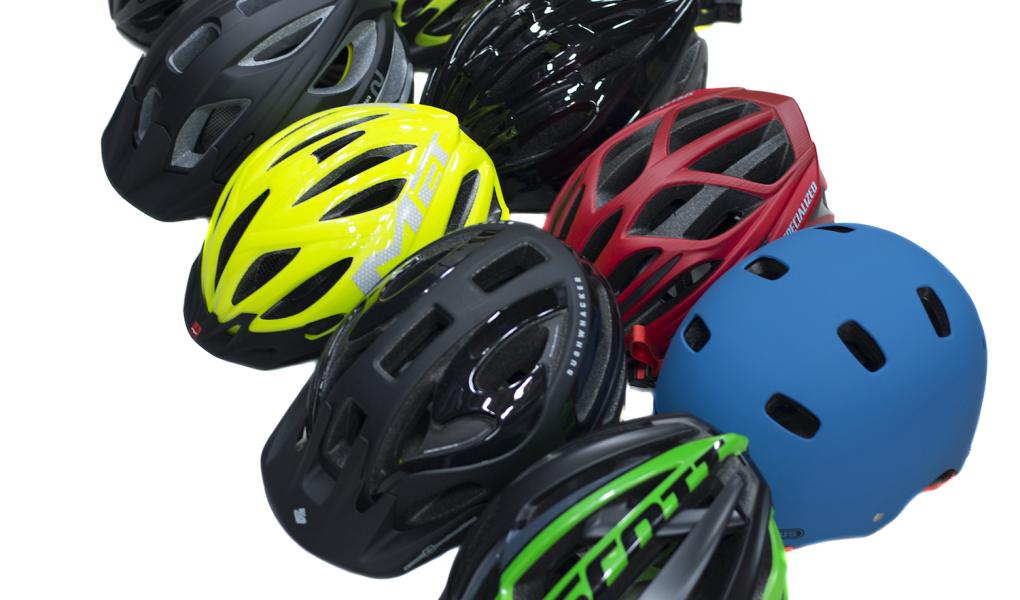Around three cyclists a day suffer serious head injuries in Sweden. Obviously, wearing a bicycle helmet reduces the risks, but Testfakta’s tests show that today’s helmets offer varying levels of protection. This is particularly the case if you receive an impact angled from the side and not directly towards the head. 
“These types of knocks are not only more common but they increase the risk of concussion and serious brain damage because the cyclist experiences rotation to both the head and brain.”
says Madelen Fahlstedt, a researcher at the neuronics department of KTH Royal Institute of Technology, which helped analyse the test results. Although angled impacts are both more common and more dangerous, to date the helmet industry has focused on helmets’ shock-absorption ability during linear impacts, which is subject to legal requirements. “We have known about the risks of head rotation at a research level since the 1950s. But it is only now that this is beginning to be discussed seriously in the industry,” says Fahlstedt. In recent years new helmets have emerged which are marketed as reducing the risk of head rotation during a collision – helmets with so-called MIPS protection. But how well do they work?

The helmets are dropped onto an anvil at different angles to simulate linear and angled impacts. Here, test manager Mikael Videby hoists up one of the helmets in the test rig. Photograph: Anna Sigge
Testfakta commissioned SP Technical Research Institute of Sweden (SP) in Borås to test five helmets with MIPS protection and four without. The helmets were placed on a dummy head and subject to linear and angled impacts. Measuring equipment inside the dummy head measured movement of the head. Using the measurement data from the tests, Fahlstedt then analysed the damage to the brain from the different impacts. “Our data simulation model shows us how much the brain tissue is stretched in the collisions. The more stretching, the higher the risk of concussion,” she says. The results show that MIPS protection helps. The risk of concussion is a full four times lower with the MIPS helmets from Giro and Spectra, compared with Abus and Specialized helmets without such protection. However, the tests also show that it’s not as easy as buying any helmet with MIPS protection. Scott Arx Plus MIPS, for example, has twice as high a risk of concussion as Spectra and Giro in some types of accident. And helmets without MIPS can also offer good protection – MET 20 Miles achieved some of the best scores for an accident equivalent to a fall to the side from a bicycle, even though it does not have MIPS. “The general design of the helmet also plays a role,” says Fahlstedt. Currently there are no requirements or limit values for bicycle helmets’ protection against head rotation. But this is frequently discussed in the industry and it is expected to be added to the certification standard in the next few years.

Foto: Anna Sigge
When it comes to helmets’ shock absorption during linear impacts, all the tested models met the legal requirements, although there is quite a difference between different helmets. “The shock absorption itself is also important, because it reduces the risk of skull fractures, which can also have serious consequences,” says Fahlstedt.
Martin Hansson Editor Testfakta News Agency
May 20, 2016

